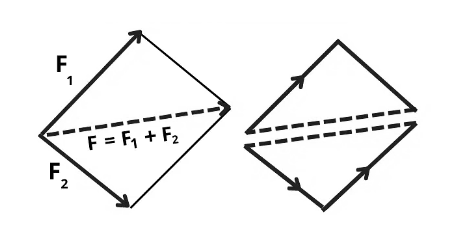
Average Force Formula: A force is typically described as the effect of a push or pull resulting from the contact between two objects. When these objects interact, each exerts a force on the other. This interaction results in the application of force on both objects. In instances where multiple forces act on a single object, it becomes necessary to calculate the average force, a concept elaborated upon in the following discussion.
Average Force Formula
Average force refers to the force produced by an object moving at a specific velocity over a designated time interval. The term "average" signifies that the velocity is not precisely measured at an instantaneous moment. Consequently, the average force is calculated as the product of the object's mass and its average velocity during the specified duration. Both the magnitude and direction of the average force are considered vector variables.

Formula
If we denote the time period as t, the force corresponds to the frequency of momentum change. In cases where multiple time periods are involved, the average force can be understood as the rate of momentum variation. This relationship is mathematically expressed by the following formula:
F= m(V f −V i ) / Δt
where,
m represents the mass of the object.
V f and V i denote the final and initial values of velocity.
Respectively, Δt signifies the time.
Average Force Formula Solved Examples
Example 1: A boy throws a shot-put ball weighing 7 kg, causing it to roll with a velocity of 4 m/s for 2 seconds. Calculate the average force.
Solution: Given parameters: Mass of the ball ( m) = 7 kg Initial Velocity ( V i ) = 0 Final Velocity ( V f ) = 4 m/s Time ( t) = 2 seconds Using the
Average Force Formula:
F= m(V f −V i ) / Δt
F= 7(4−0)/2 = (7×4) / 2
F= 28 /2 =14 Thus, the average force is 14 N.
Example 2: An object of mass 5 kg is subject to a force of 30 N for a duration of 6 seconds. Calculate the average acceleration of the object.
Solution: Given: m=5 kg, F=30 N, Δt=6 s
Since F=ma,
a= F / m
a= 30 / 5
a=6 m/s 2
Example 3. Determine the average force acting on an object with a mass of 50 kg, as it rolls at 6 m/s for 3 seconds.
Solution: Given: m=50 kg, V i =0 m/s, V f =6 m/s, Δt=3 s
Since F= m(V f −V i ) / Δt ,
F= 50(6−0) / 3
F=100 N
Example 4. Determine the average force acting on an object with a mass of 50 kg, as it rolls at 2 m/s for 3 seconds.
Solution: Given: m=50 kg, V i =0 m/s, V f =2 m/s, Δt=3 s
Since F= m(V f −V i ) / Δt ,
F= 50(2−0) / 3
F=100/3 N
Example 5. Determine the average force acting on an object with a mass of 50 kg, as it rolls at 5 m/s for 3 seconds.
Solution: Given: m=50 kg, V i =0 m/s, V f =5 m/s, Δt=3 s
Since F= m(V f −V i ) / Δt ,
F= 50(5−0) / 3
F=150/3 N
Through examples with different parameter values, we've demonstrated the practical use of the formula in real-world scenarios, showcasing its utility in determining average forces and furthering our understanding of physical phenomena.
Understanding the average force formula ( F= m(V f −V i ) / Δt ) is essential for calculating the force exerted on an object during changes in velocity over a specified time period. This formula, involving mass ( m), initial velocity ( V i ), final velocity ( V f ), and time duration ( Δt), allows for the quantitative analysis of forces in various scenarios. The concept is versatile and applicable in physics problem-solving, providing valuable insights into the dynamics of objects experiencing acceleration or deceleration.
| Related Links | |
| Doppler Effect Formula | Voltage Divider Formula |
| Dc Voltage Drop Formula | Lattice Energy Formula |
Average Force Formula FAQs
What is the average force formula?
When is the average force formula used?
What are the units of measurement for average force?
How is direction considered in the average force formula?










